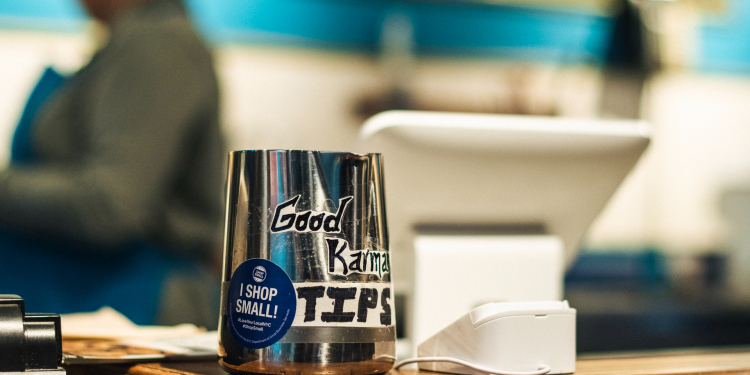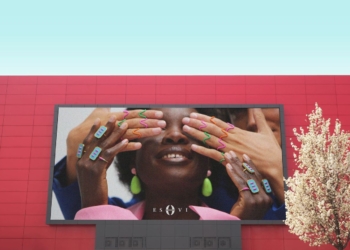During quarantine, people confined to their homes made signs to thank health care workers for soldiering on. As the pandemic continued, the public began to expand its definition of “heroes,” to include bus drivers, store clerks, restaurant staff, and food delivery people—all the essential workers that are a central part of modern society.
According to University of Pennsylvania, the average tip on delivery and takeout peaked during the shutdown. Now, while still higher than the pre-pandemic levels, a New York Times survey of restaurant goers in the Big Apple suggests tipping is on the decline.
As the pandemic recedes—at least for now—how have consumer behaviors changed? How has the pandemic, along with an increase in the use of technology that reduces the need for contact, changed actions and expectations around tipping?
Penn Today talked with Catherine Lamberton, the Alberto I. Duran President’s Distinguished Professor and professor of marketing in the Wharton School, to find out how about tipping’s “new normal.”
Q. What might customers consider when tipping for delivery service, coffee, ice cream?
A. I think that many of us are aware that the last year and a half has been very hard on a lot of people in service industries. So I’d hope that our goal here is to be fair. But the reason that I think we may become a bit unfair is when we base our tipping decisions on the sheer amount of time the delivery may have taken. For example, we might think, It’s a 10-minute drive; why should I tip much?
What we might want to consider instead is why we requested delivery to begin with. How much time or effort did you save by ordering delivery? What did you do instead of going to pick up your own food? How much was that time, effort, or experience worth to you? So, for example, if you’re having friends over for dinner and you decide to order in delivery, what you got was very valuable. Because that delivery person is dodging crazy drivers through the streets of the city with your food strapped to their bike, you got to relax catching up with people you care about. You didn’t have to interrupt your time together to get your car, drive to the restaurant, get the food, drive it back, repark your car, and then rejoin your starving friends. The things you were able to do were arguably far more valuable than 10 minutes; the fact that the delivery person is well set up to make the delivery doesn’t make their contribution to your evening any less valuable. So I would encourage people to compensate delivery drivers on the basis of what the delivery service did for them, not on the basis of time alone.
Q.Often, electronic screens prompt customers to tip prior to receiving a service. Does that change the purpose of a tip?
A. Giving a tip prior to service represents a shift for most of us; we usually think of a tip as a way of saying, ‘thank you’ to the people who have provided us with service. But if we give the tip beforehand, its meaning depends on whether the person helping us is or is not aware of the tip. In cases where a service provider is unaware of a tip, for example, when we are prompted to tip in an Uber or Lyft en route to our destination, the tip allows us a way of expressing our own good feelings in the moment. If the service provider is aware of the tip during service provision, it’s functioning as a means of feedback and possibly encouragement. So, the tip can be reward (under the standard practice), emotional expression (if unknown), or feedback. Customers need to do all three. So service providers should think about which is most important in their service context and consider structuring their tip system in such a way that the information the tip provides is most meaningful for everyone.
Q. As restrictions ease during a more relaxed phase of the pandemic, can we expect tipping norms to change, or not? What should customers expect for the future?
A. It’s always hard to predict the future, but I think you’ll see different segments of consumers acting in different ways. Some people are still trying to get themselves back on solid economic footing. It will be difficult for them to be generous about tips, even if they want to. Other people are so happy to be out in the world, catching up on their entertainment spending, that they may be quite generous; I would expect this would become the norm in higher-end situations.
Overall, I think we’ll see tipping rise in the short-term, at least in higher-end contexts. People will use tips to thank workers who came back after the pandemic lockdown, or as a way of recognizing the losses they likely experienced during that time. It can also be a way to express one’s simple happiness for the newly appreciated magic of being at a restaurant again. Or it may be a signal of one’s own return to prosperity, a sign that we are, in fact, all feeling good enough about the world to give to someone even when we don’t necessarily have to. I hope appreciation and generosity become the norm, but it will remain to be seen what happens in the longer term.
By Kristina García






























Discussion about this post